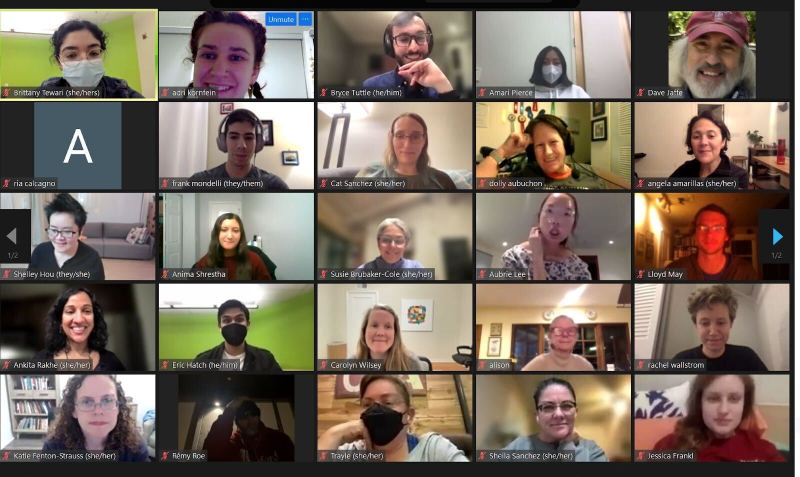The Stanford Disability Community Space celebrated its official opening on Tuesday via Zoom. Located in the former student lounge of the Office of Accessible Education, the Space’s mission is to allow students with disabilities to find community and feel comfortable exploring their disability identities.
Tuesday’s event marked the culmination of decades of disability activism on Stanford’s campus. Calls to open up a disability-focused community center have been a priority for Stanford disability activists since the 1980s. In 2017, the Abilities Hub (A-Hub) was launched as an interim space. Efforts to launch a more permanent community center were stalled due to the COVID-19 pandemic.
Approximately 19% of students at Stanford have a registered disability, encompassing a broad spectrum of unique individuals and conditions, from people with physical disabilities to those with neurodivergence.
“It’s been a hard road but it’s really worked out for us,” said Frank Mondelli, a sixth-year Ph.D. student and former ASSU Co-Director of Disability Advocacy. “I am so thrilled to see what the next steps are.”
When Bryce Tuttle ’20 began his Stanford career, he said that “disability wasn’t even on the list” in conversations about diversity on campus.
“When you asked most people they wouldn’t even be able to describe what disability meant in terms of diversity or in terms of an identity or community,” Tuttle said.
For Tuttle, the opening of the Stanford Disability Community Space marks a significant step forward in disability recognition. He said trying to convince people that disability mattered was a difficult journey in itself. “To see now 43 people in this Zoom when it felt like we could sometimes only get three people in a room to talk about this is just an indescribably amazing feeling,” Tuttle said.
Brittany Tewari will serve as the Space’s coordinator. Tewari, who was born with cerebral palsy, has devoted a major part of her life to disability advocacy.
“I’ve always noticed the specific injustices and the oppressive systems that a lot of individuals with disabilities face,” Tewari said. “I think it’s really important that we address this in higher education, as this is the first time that a lot of us are finding our independence and our own individuality.”
Tewari is working with student coordinators Eric Hatch ’23 and Amari Pierce ’24 to create programming for the community center. Together, they will plan weekly events, including educational workshops, community building activities and office hours for students to hang out and build community. The team will also collaborate with other disability organizations at Stanford.
One of Tewari’s current projects involves creating a specialized disability report for Stanford’s IDEAL survey in order to find out how the University can better serve the disability community.
The Disability Community Space is designed to be as accessible for people with disabilities as possible. All of the furniture is on casters, so that it is easily movable and interchangeable. There are multiple sets of doors that provide easy access to the student lobby and accessible bathrooms. Tewari is also investing in light dimmers to accommodate individuals with light sensitivities.
While disability justice and education are some of the main focuses of the community center, Tewari reminded attendees that “a huge part about the disability community too is just resonating with each other and creating that community and building that foundation of comfort and trust.”
Tuttle emphasized how much more work there is to be done, saying the community needs to keep “what we have here and fight for it because community is key to organizing which is key to justice.”
